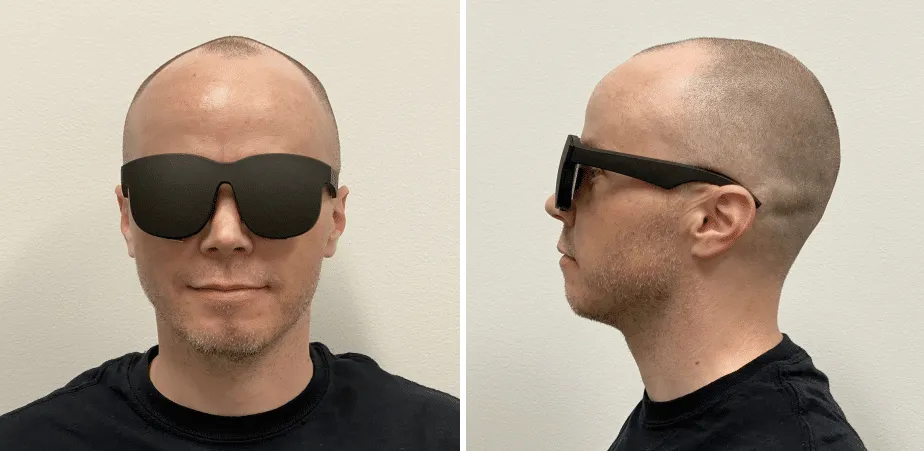Facebook’s VR research division is presenting prototype VR optics smaller than any we’ve seen yet for the annual SIGGRAPH computer graphics conference.
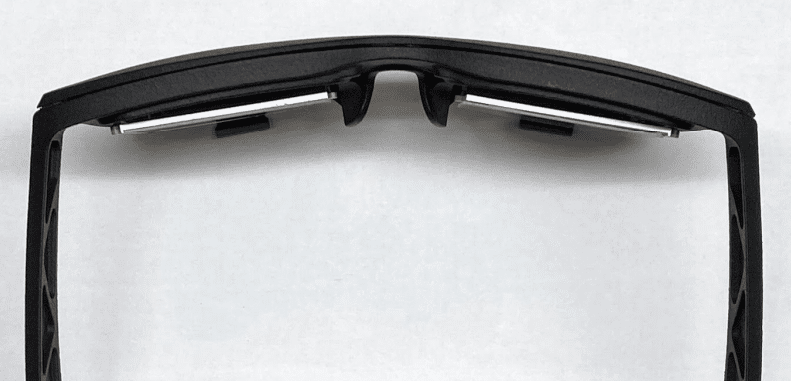
The ideas behind the “holographic near-eye display” could one day enable VR headsets with sunglasses form factor- but for now this is solely research with limitations.
Why Are VR Headsets So Bulky?
The primary driver of the size and bulk of today’s VR headsets is the optical design. Magnifying a display over a wide field of view requires a large, thick lens, and focusing it at a viewable distance requires a long gap to the display. After adding the housing needed to contain this system, even the most minimal designs end up over 350 grams.
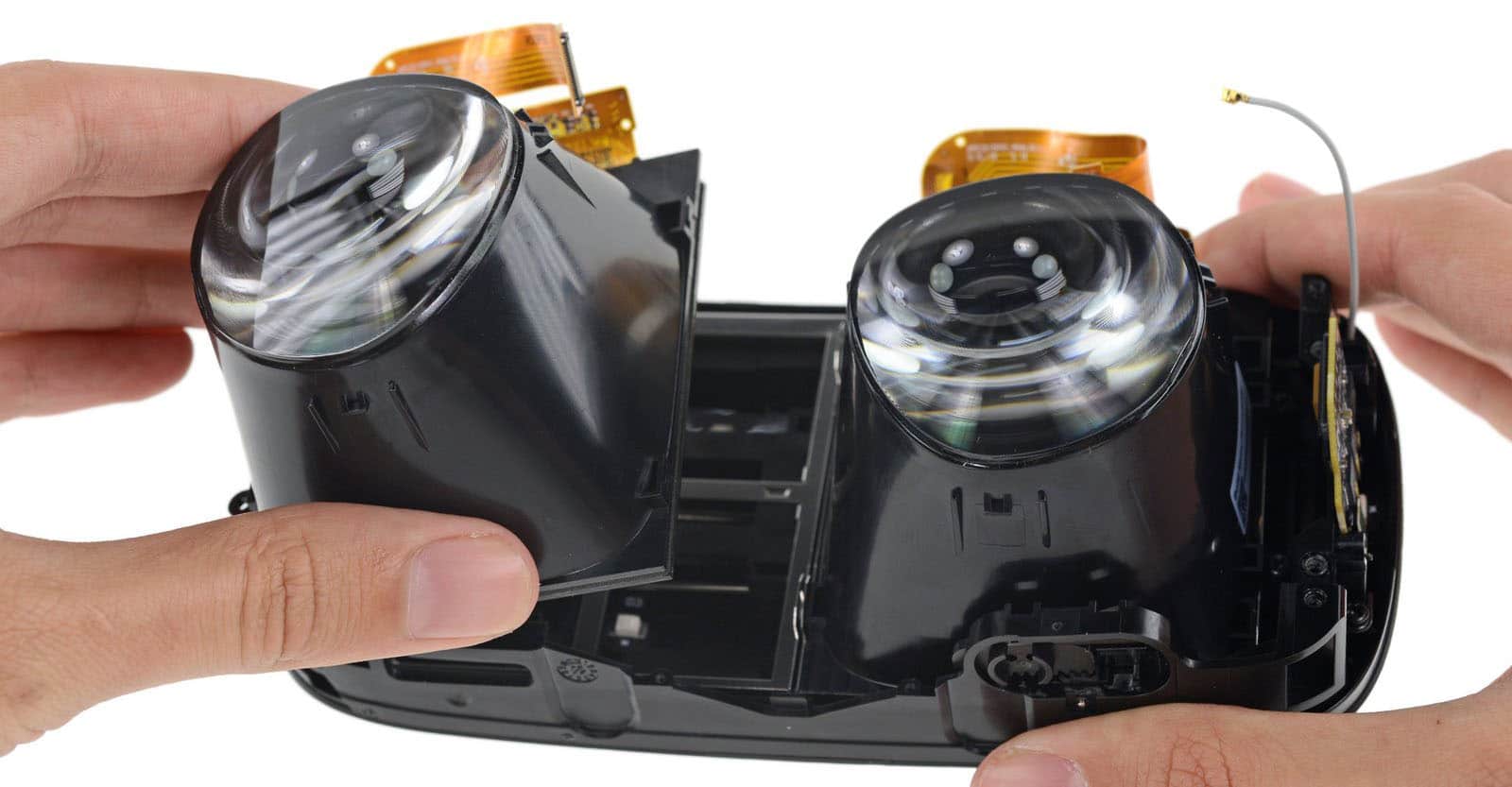
The standalone Oculus Quest, with a battery, mobile chip and lens separation adjustment, weighs 571 grams. Many people find it hurts their face after a few minutes.
Panasonic and Pico have shown off prototypes of compact headsets using “pancake lenses”, and Huawei has already launched this as a product in China. Without a tracking system or battery, these headsets end up around 150 grams.
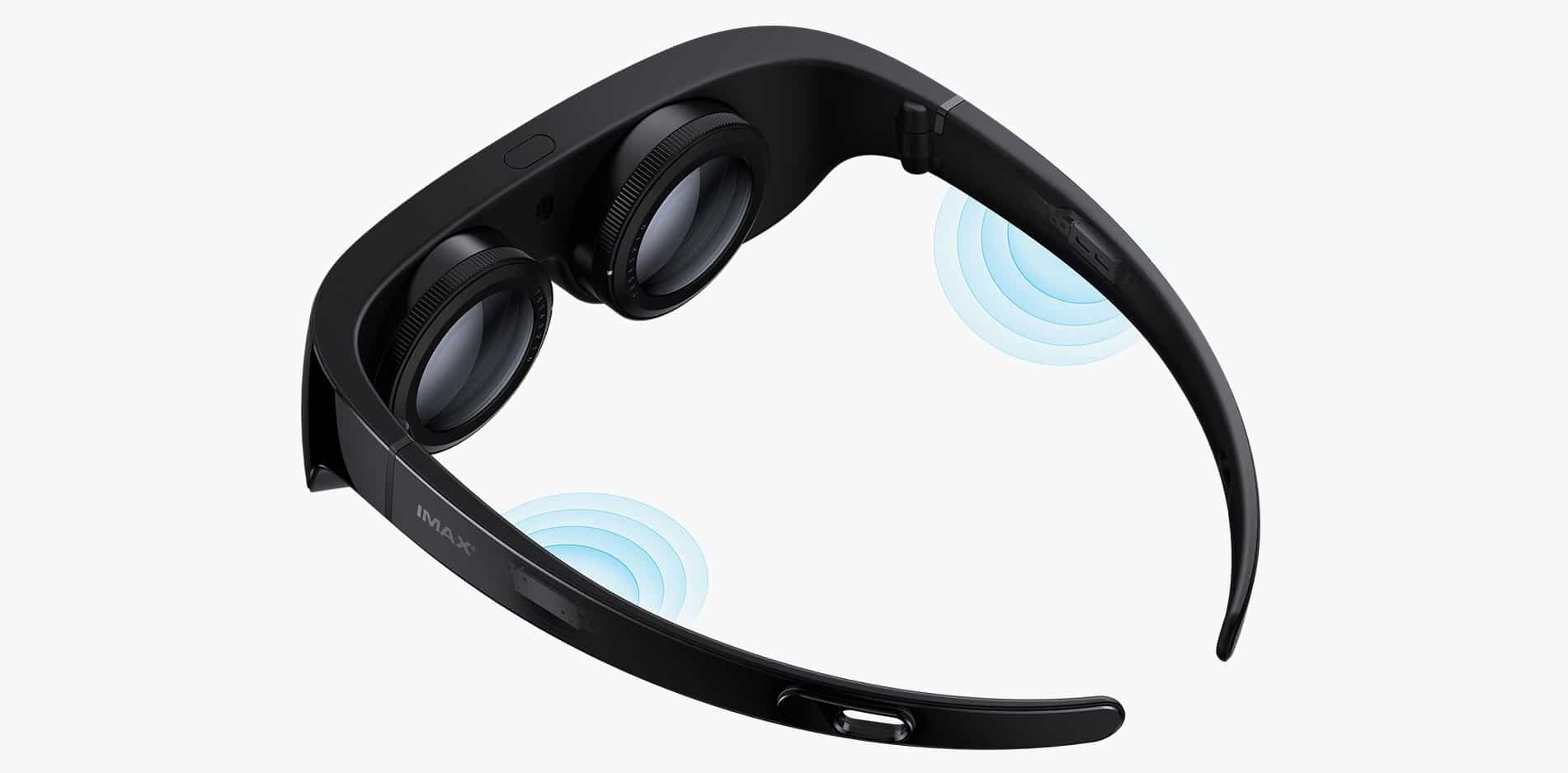
However, these current pancake lens designs have a number of unsolved flaws. They block around 75 percent of light which can make the image look dim and washed out. They may also show faint ghost versions of the image slightly misaligned, and this “ghosting” only gets worse as you try to improve the image with a brighter source.
Holographic Lenses
Facebook Reality Labs’ new approach is a thin film where focusing is done by holographic optics instead of by the bulk of the lens. ‘Hologram’ in this context just means a physical “recording” of how light interacts with an object- in this case a lens rather than a scene.
Facebook claims the research may be able “to deliver a field of view comparable to today’s VR headsets using only a thin film for a thickness of less than 9 mm.” The total weight of the display module is claimed as just 18 grams. However, this does not include the actual laser source, and nor do any of the images Facebook provided. “For our green-only sunglasses-like prototype, we measured an overall maximum field of view of approximately 92◦ ×69◦,” according to the research paper.
By using polarization-based optical folding, these ultra-lightweight lenses can be placed directly in front of the display source.
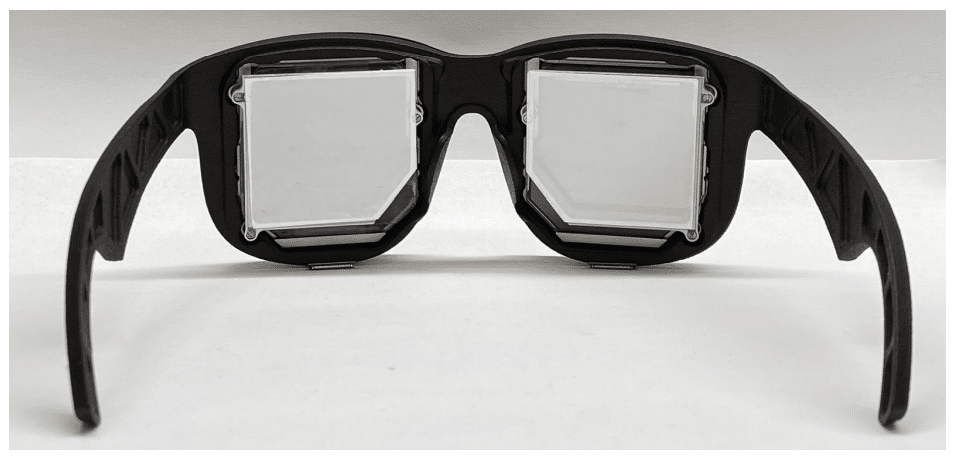
Because holographic elements disperse light, the only practical illumination source is lasers used at specific angles and wavelengths. The researchers were able to “inject” laser light into a 2.1″ 1600×1600 LCD, replacing the backlight.
The prototype is currently monochrome, only capable of displaying the color green. The researchers have a tabletop-sized proof of concept for multi-color, and believe bringing this to the sunglasses prototype is “viable” with further engineering.
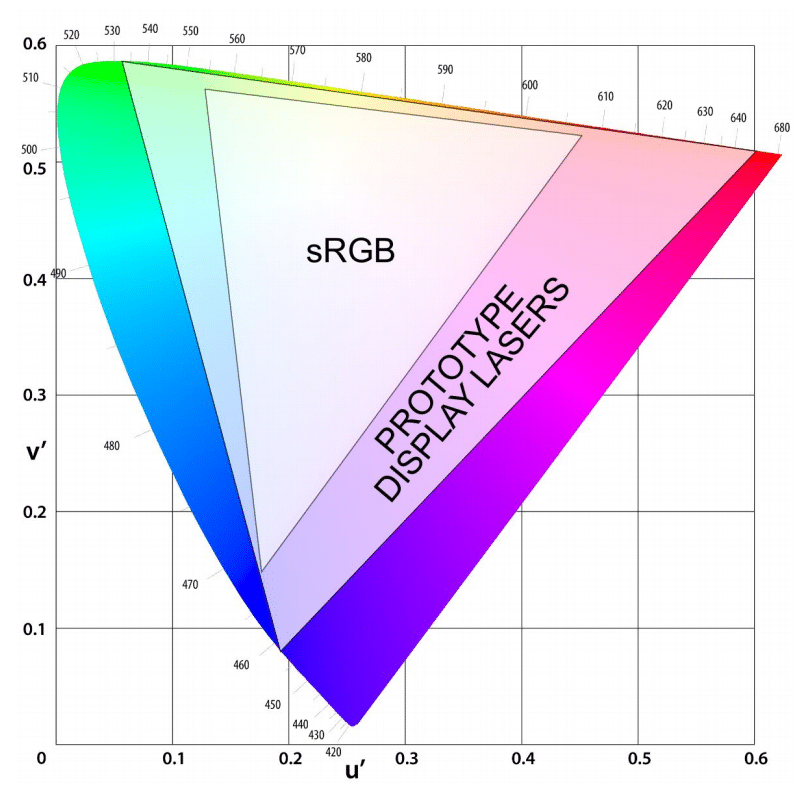
The range of colors laser light can deliver (known as the color gamut) is significantly wider than LCD displays, and in fact slightly wider than even OLED, so this would represent a milestone achievement if it could be moved into a head-worn system.
Early Research, Lofty Goals
It’s important to understand that what’s being presented here is just early research for a new kind of display system. If it ever becomes a product, it will also need a tracking system. And unless it connects to your phone with a cable, it’d likely need a battery and mobile chipset too.
Facebook describes this research as being on the same miniaturization research “path” as Half Dome 2 and 3, which it presented at Oculus Connect 6 back in October.
Those headsets are much larger than what’s being shown here, but achieved a wider field of view while also having eye tracking and variable focus. FRL says future iterations of this sunglasses prototype could also be varifocal by moving the lenses on a range of just 1 millimeter. This could theoretically be achieved with tiny piezoelectric actuators.
For virtual reality to reach Mark Zuckerberg’s lofty goal of 1 billion users, headsets need to get significantly more comfortable while increasing realism. While designs like the Rift S “halo strap” can redistribute weight, this is more of a bandage than truly addressing the issue of bulk.
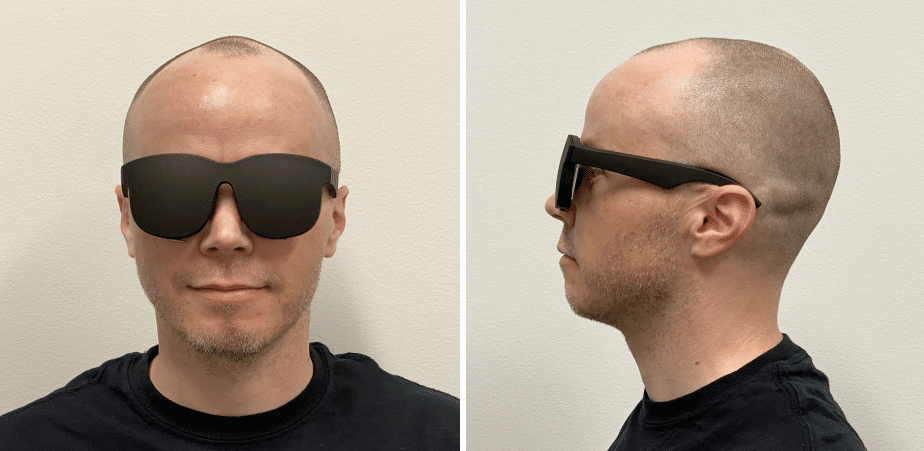
Like all early research, this idea may never pan out. Practical issues may emerge. Facebook is simultaneously exploring a number of novel compact display architectures. If it can make even one work, it could do to VR what LCD panels did to CRT monitors and televisions.
Facebook’s research paper concludes:
“Lightweight, high resolution, and sunglasses-like VR displays may be the key to enabling the next generation of demanding virtual reality applications that can be taken advantage of anywhere and for extended periods of time. We made progress towards this goal by proposing a new design space for virtual reality displays that combines polarization-based optical folding, holographic optics, and a host of supporting technologies to demonstrate full color display, sunglasses-like form factors, and high resolution across a series of hardware prototypes. Many practical challenges remain: we must achieve a full color display in a sunglasses-like form factor, obtain a larger viewing eye box, and work to suppress ghost images. In doing so, we hope to be one step closer to achieving ubiquitous and immersive computing platforms that increase productivity and bridge physical distance.”

